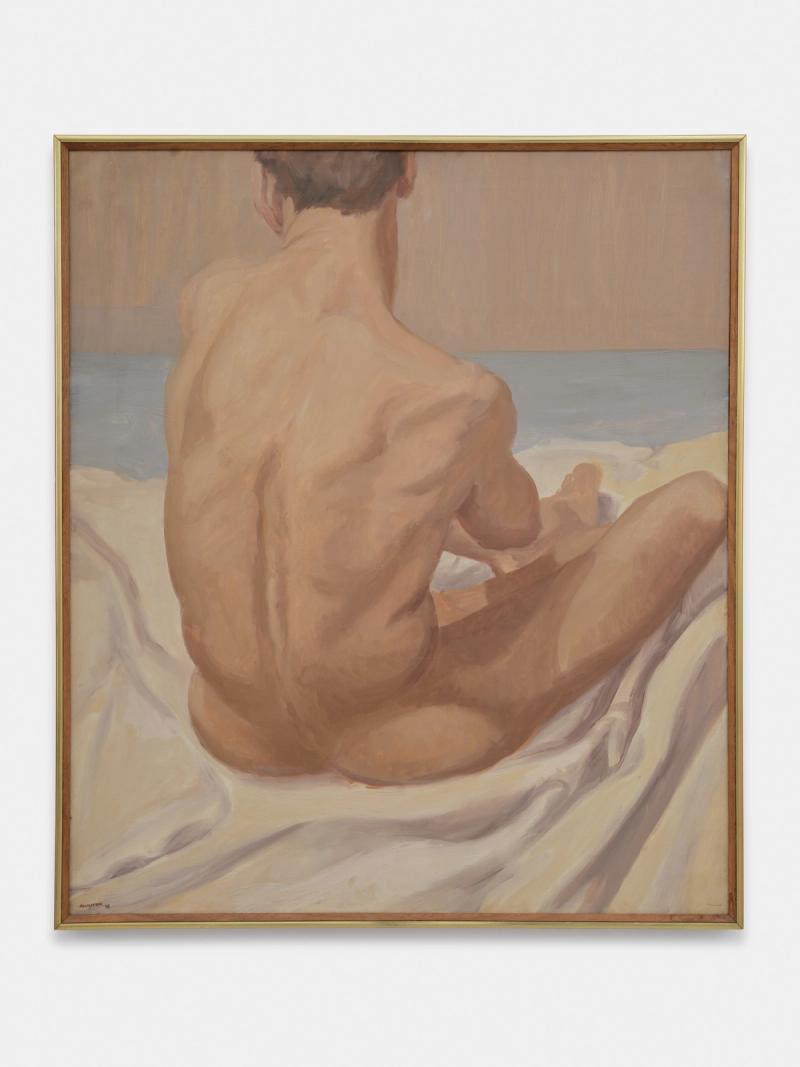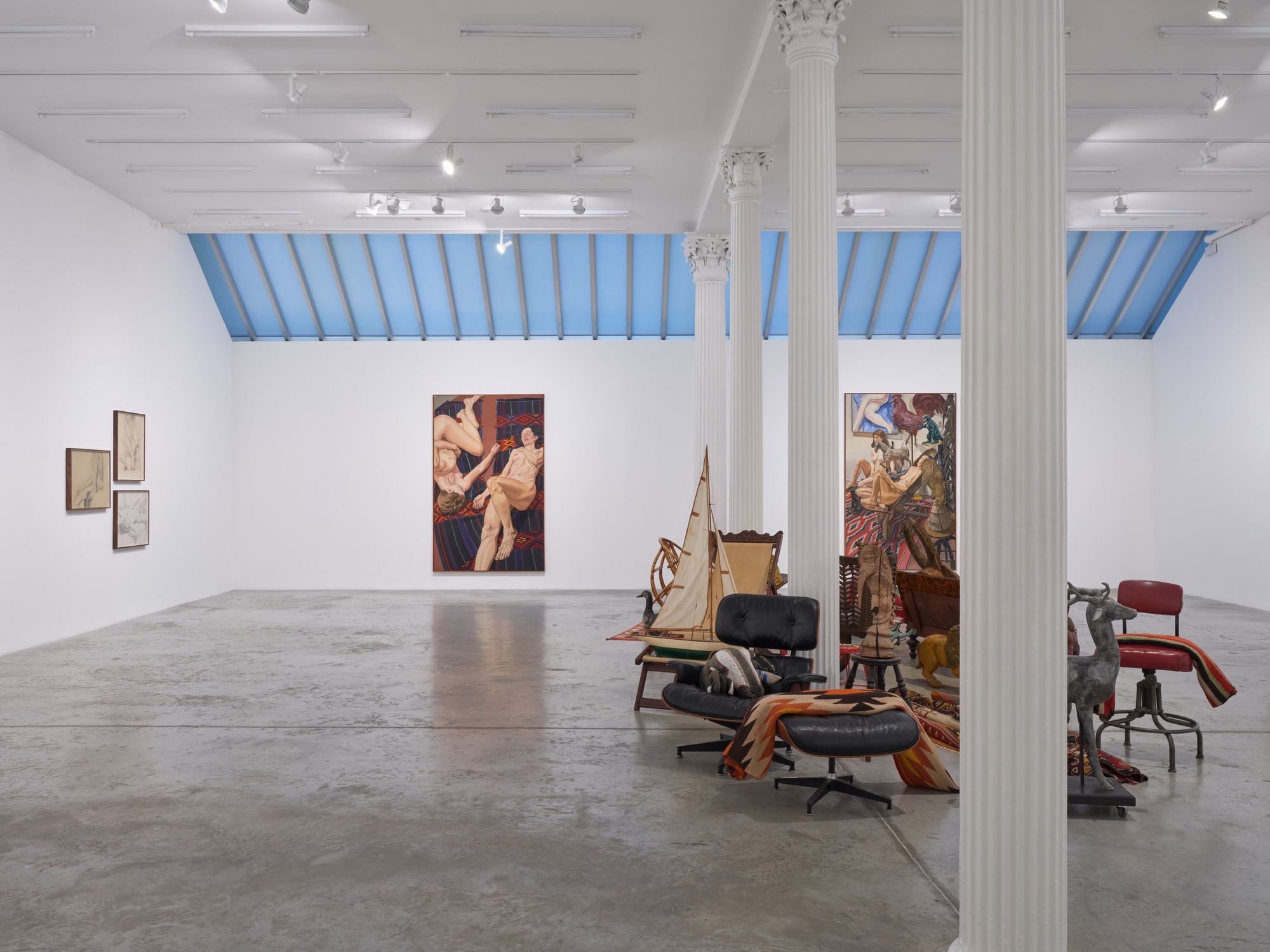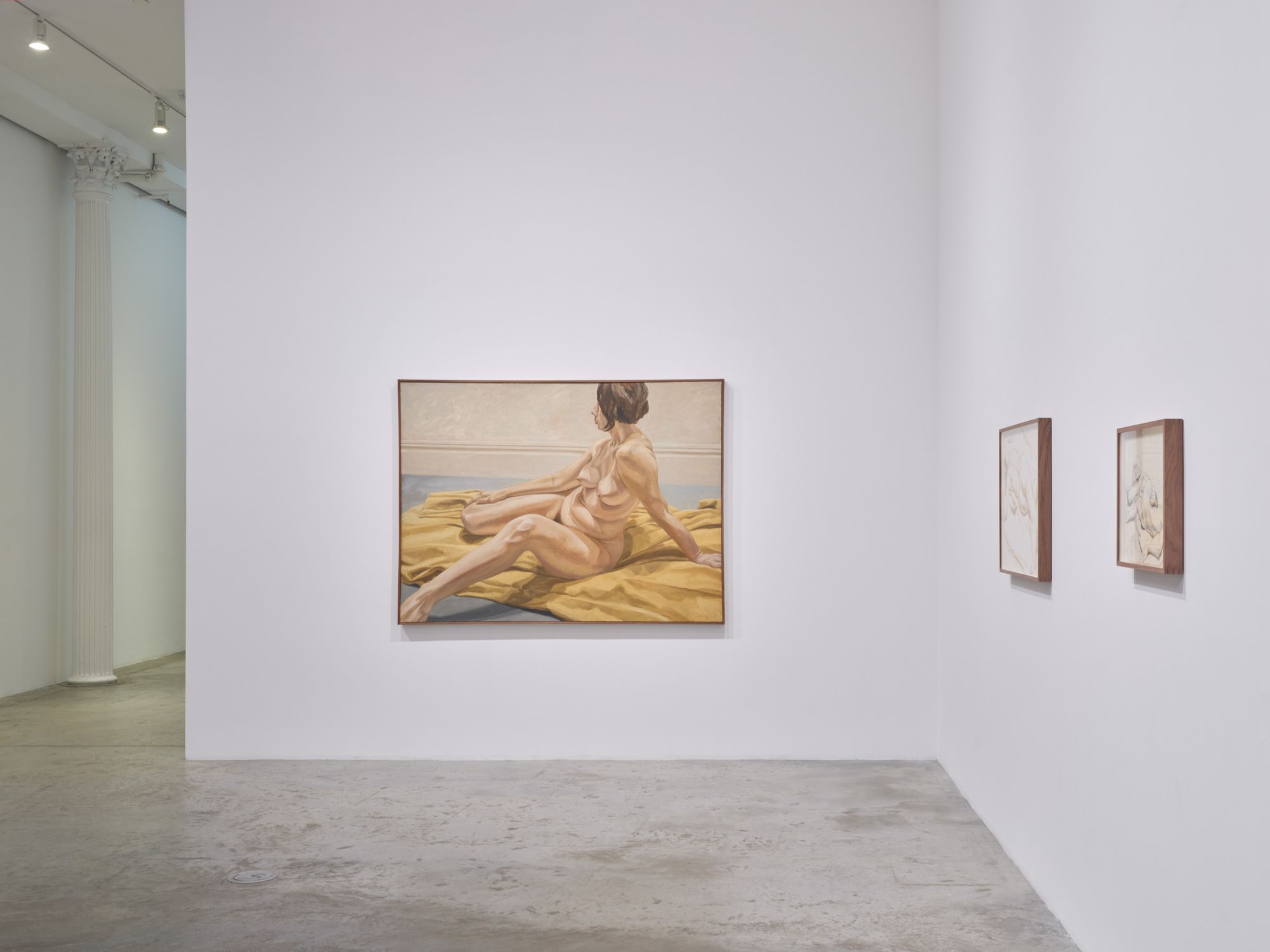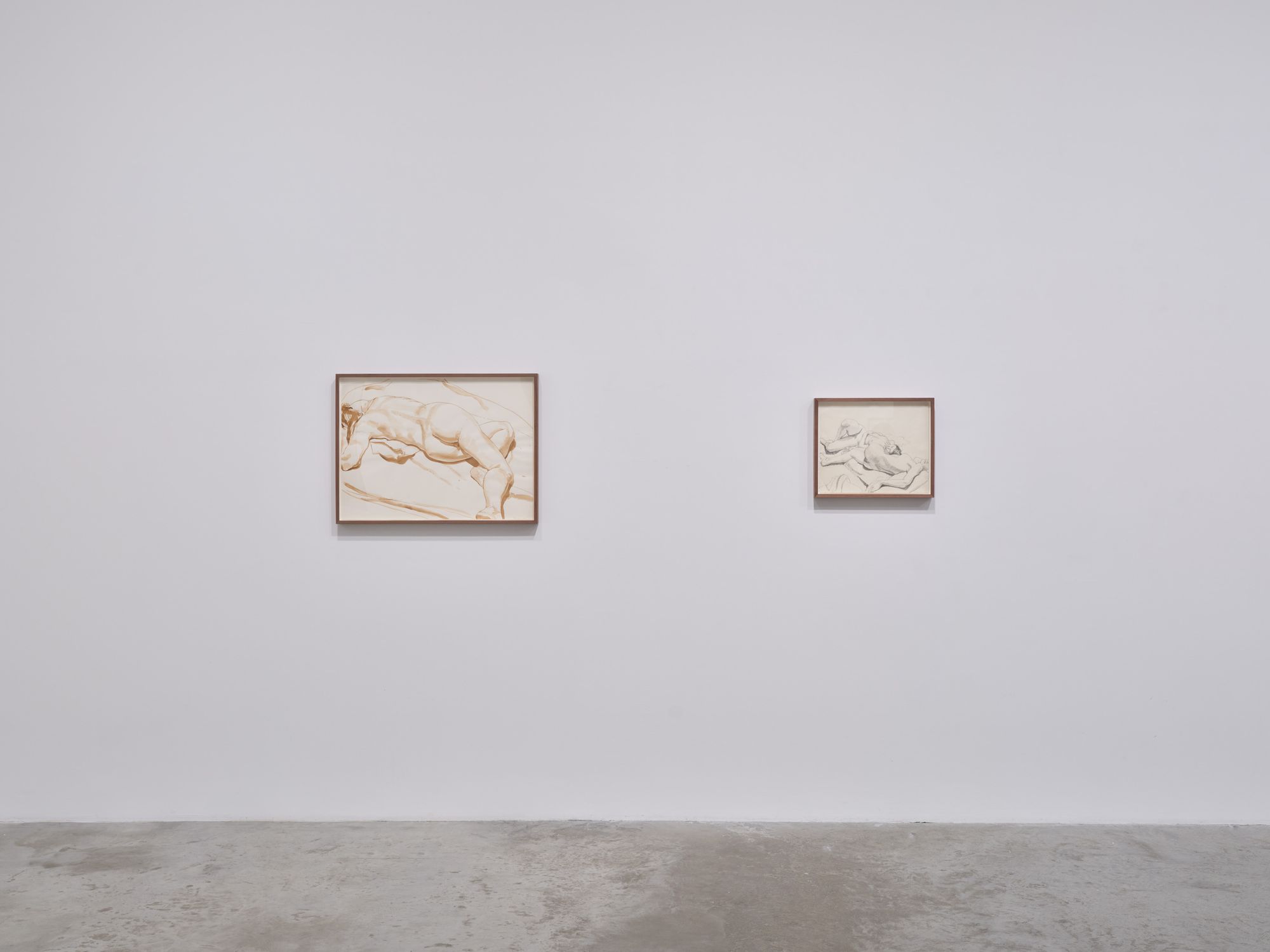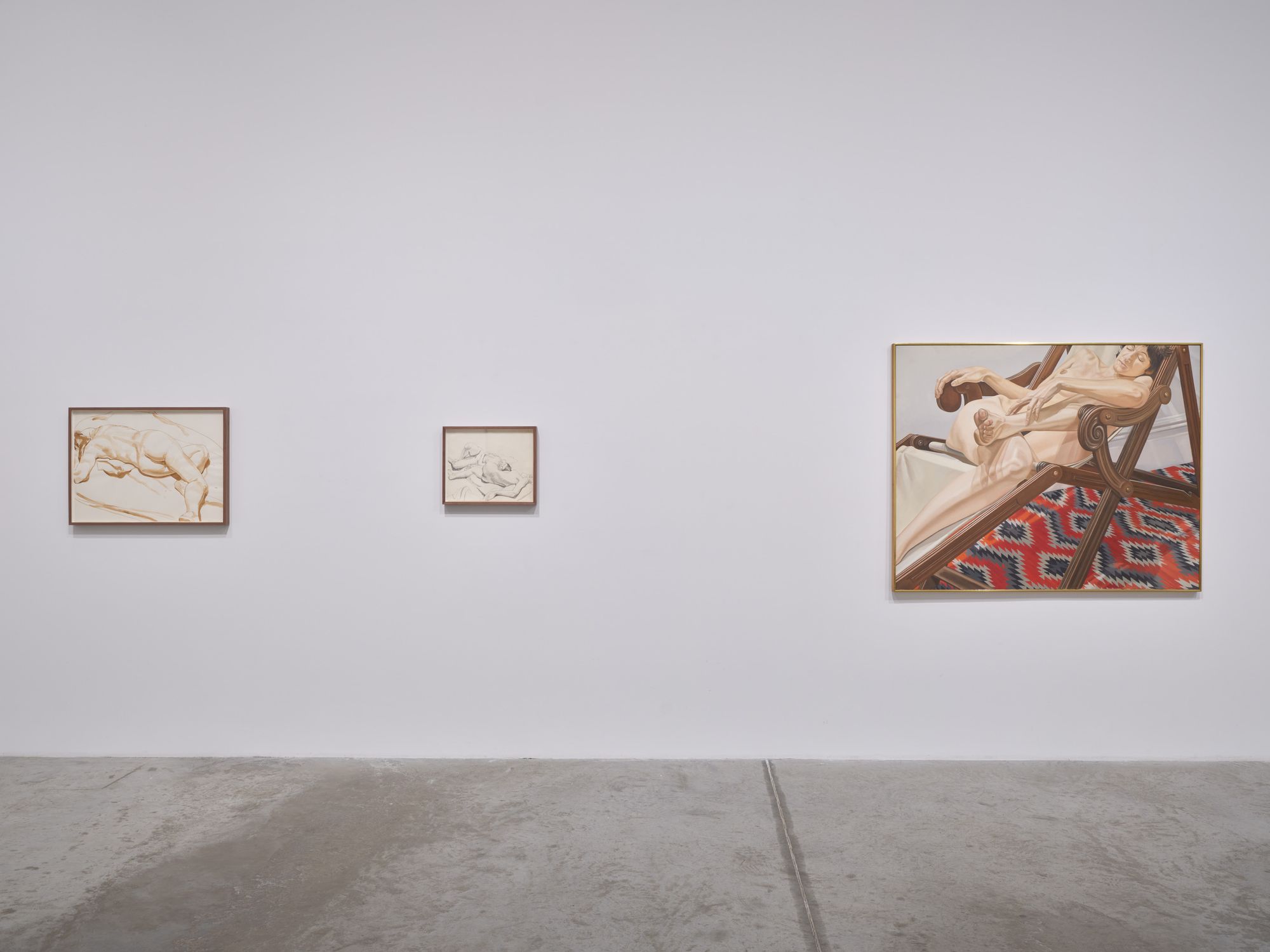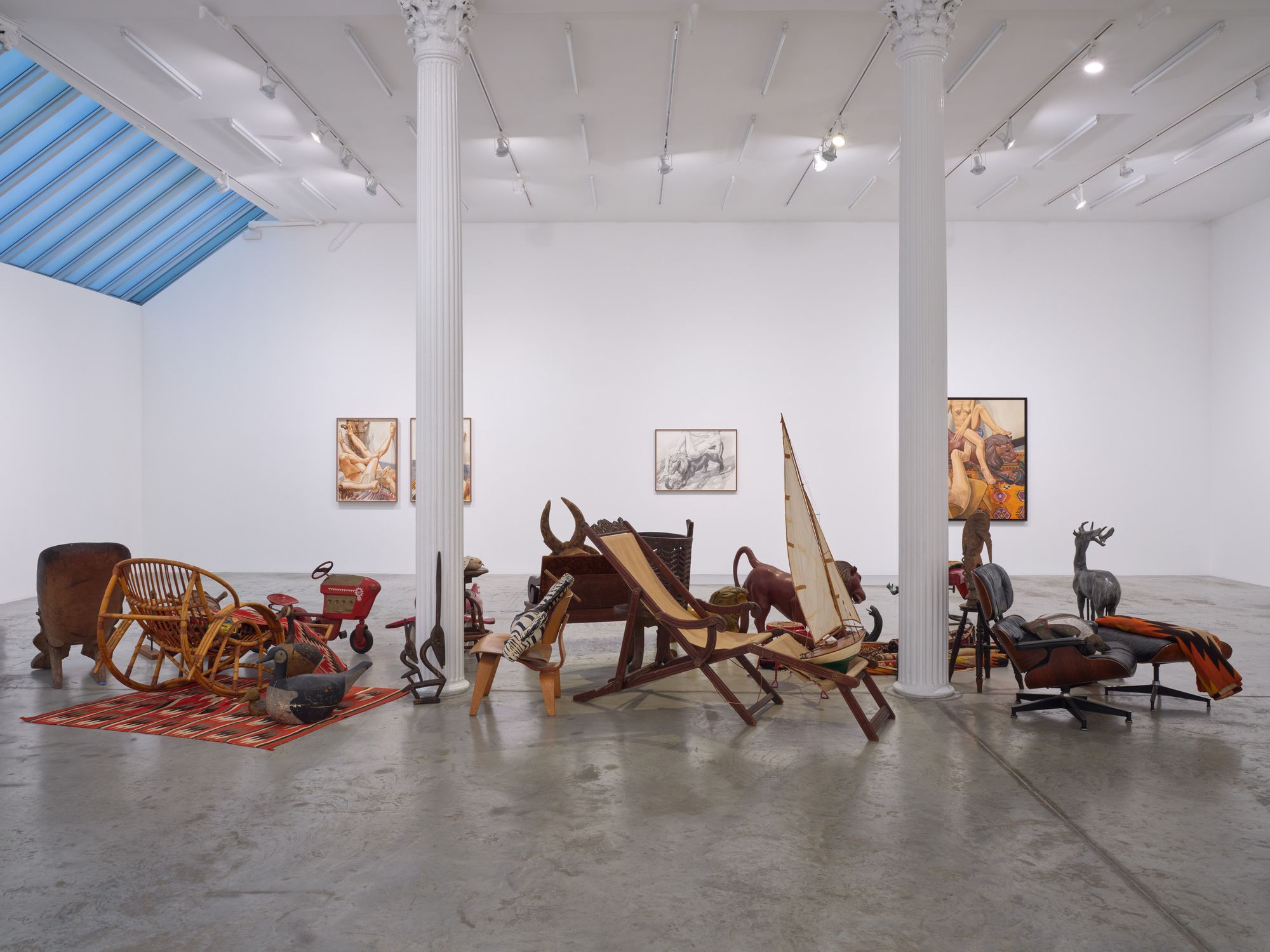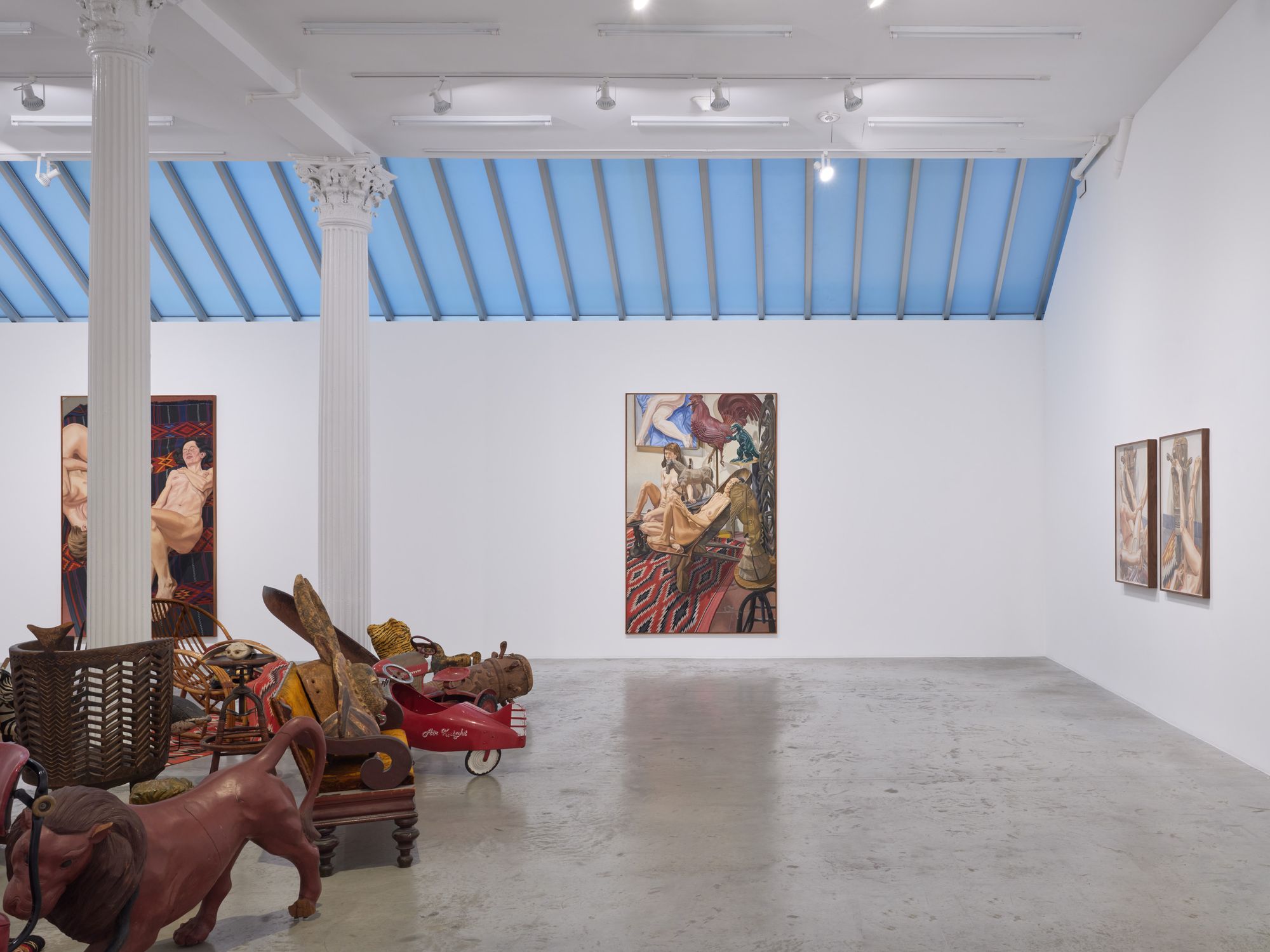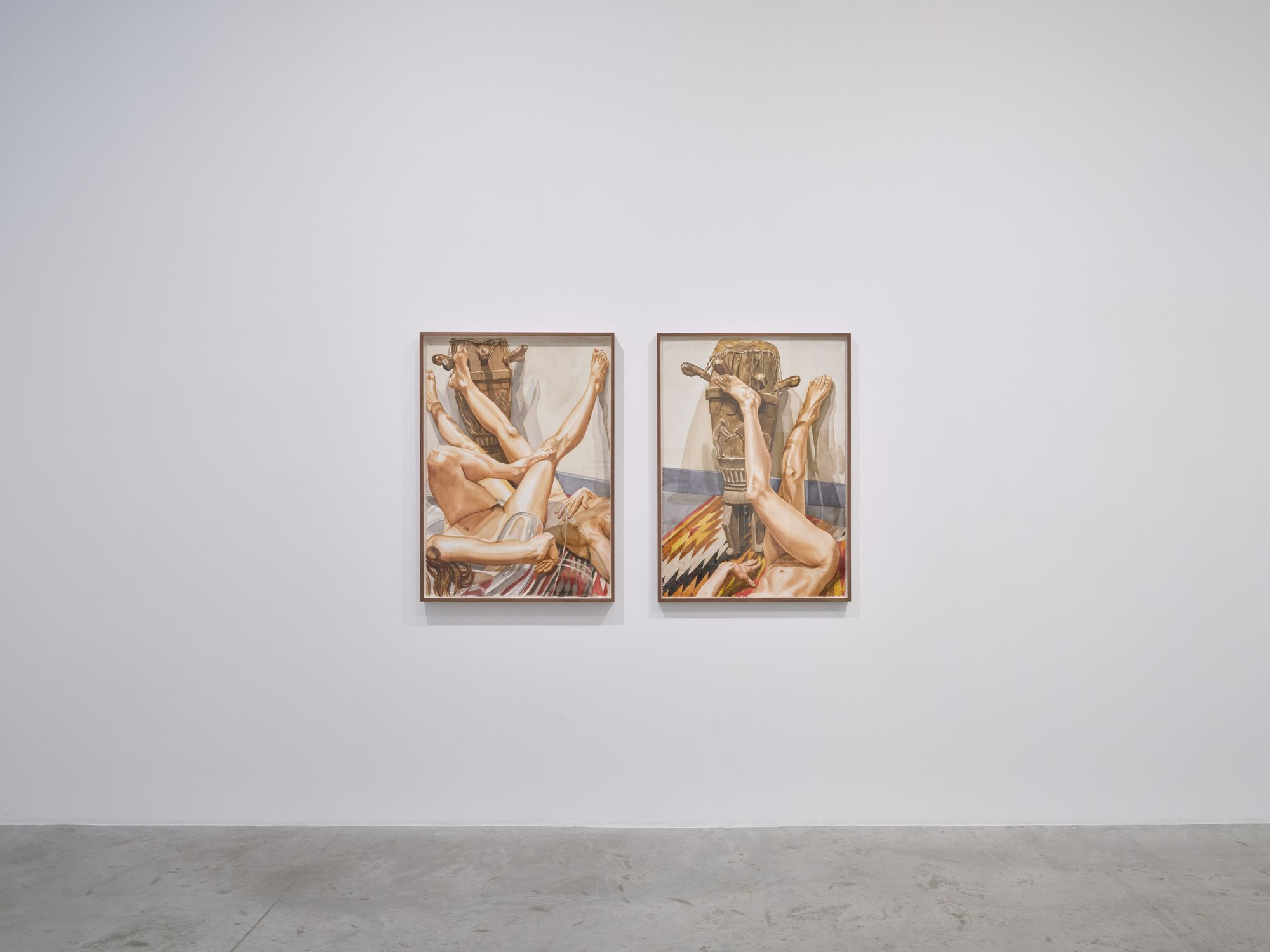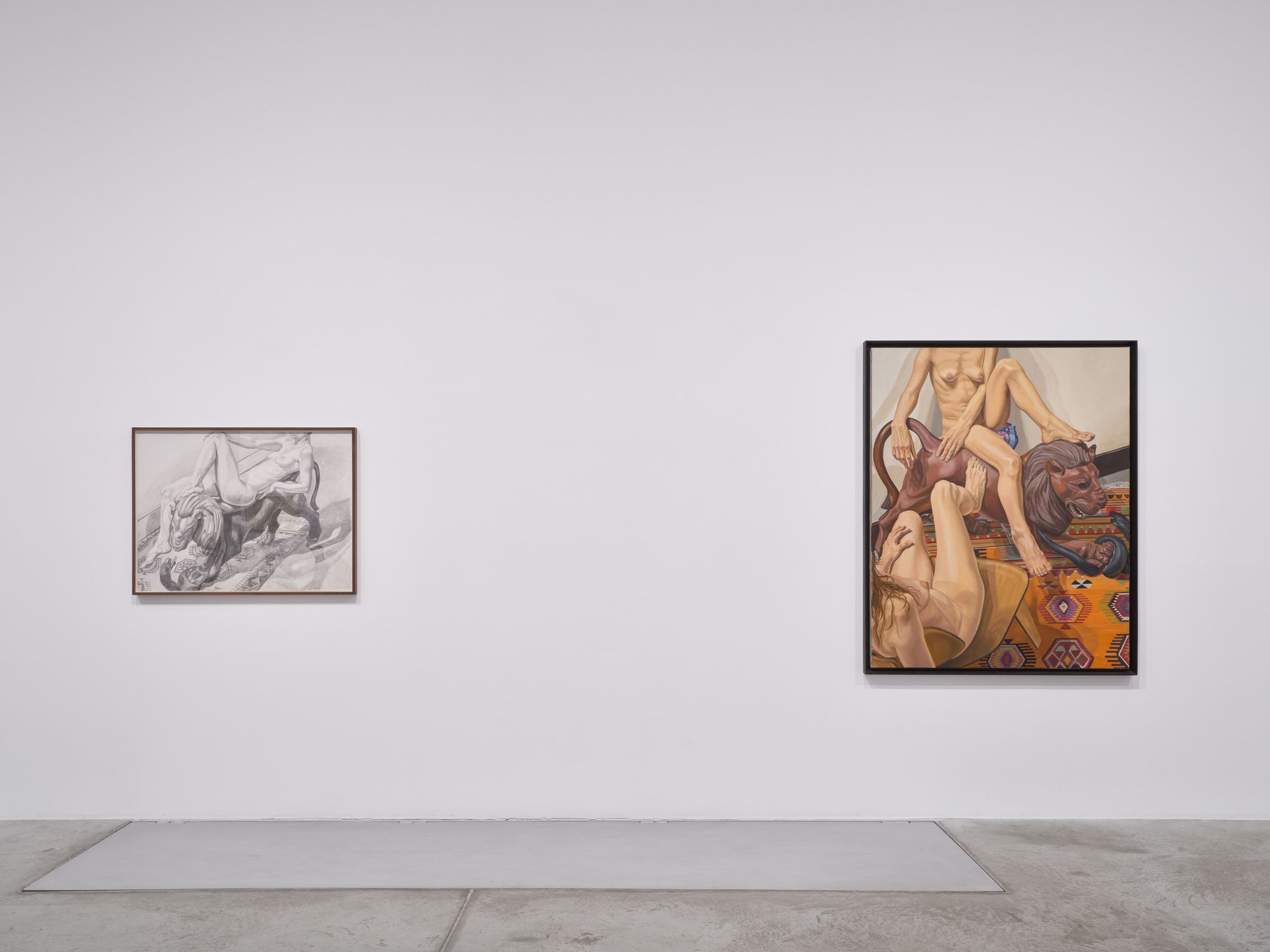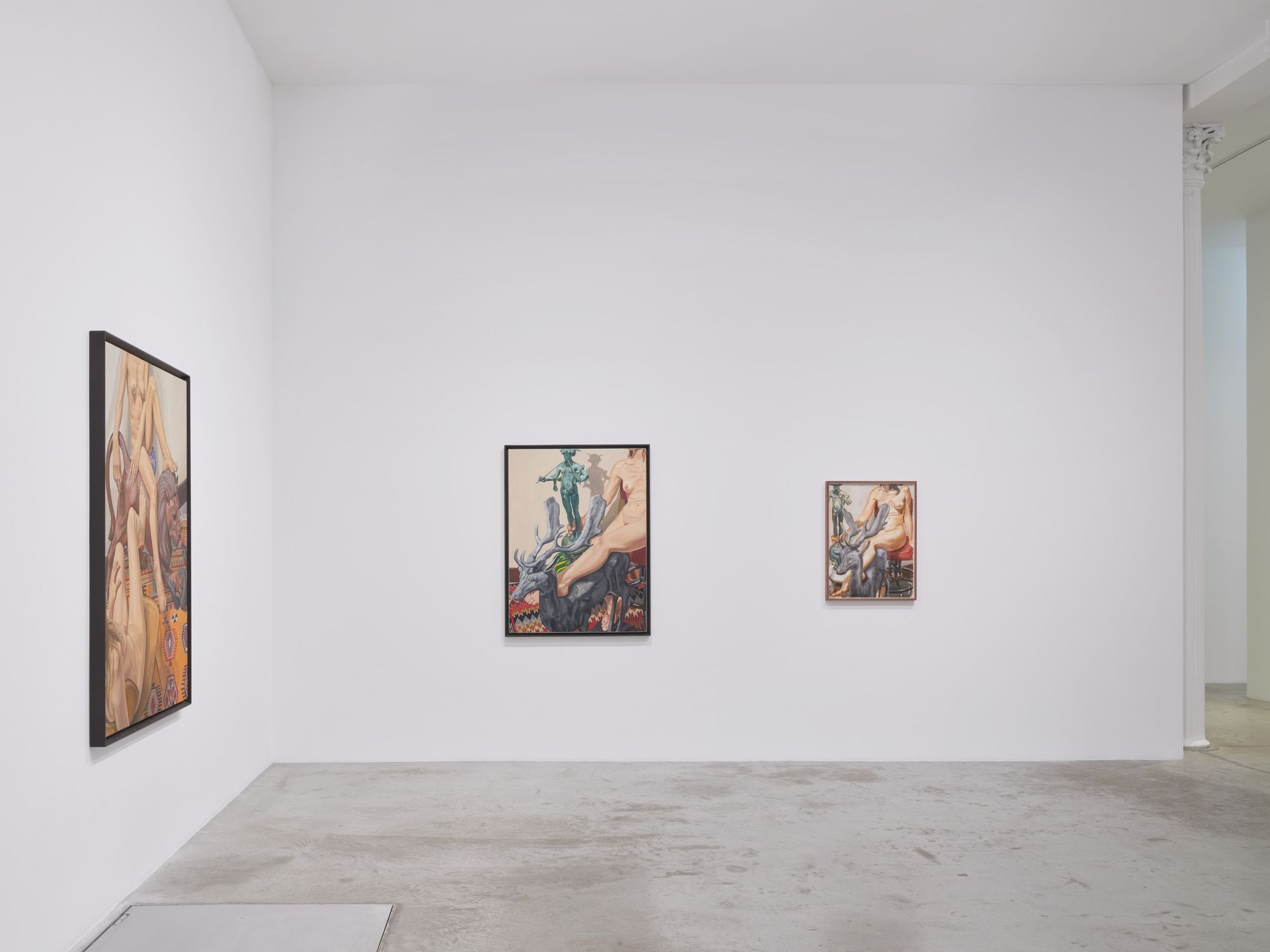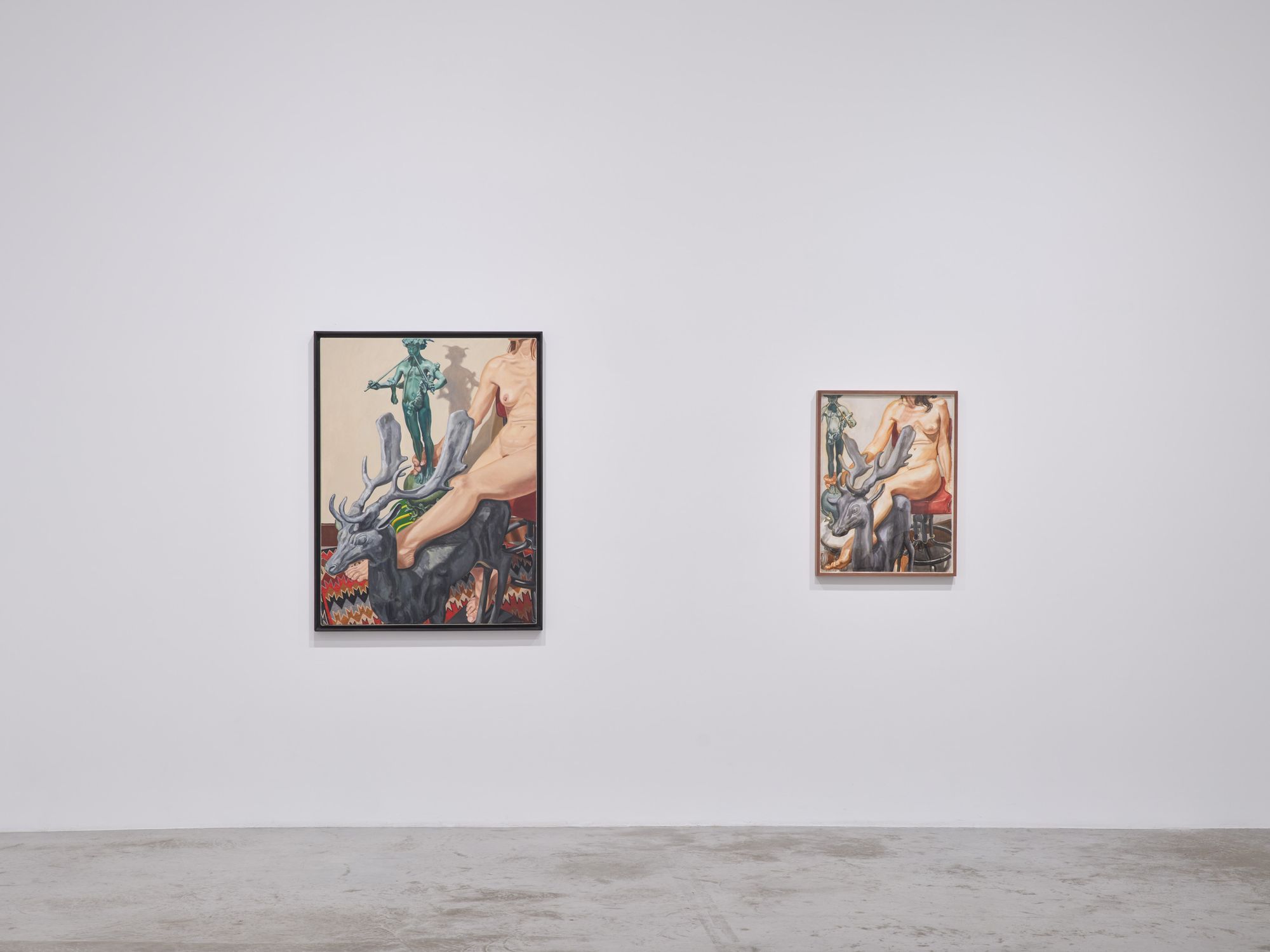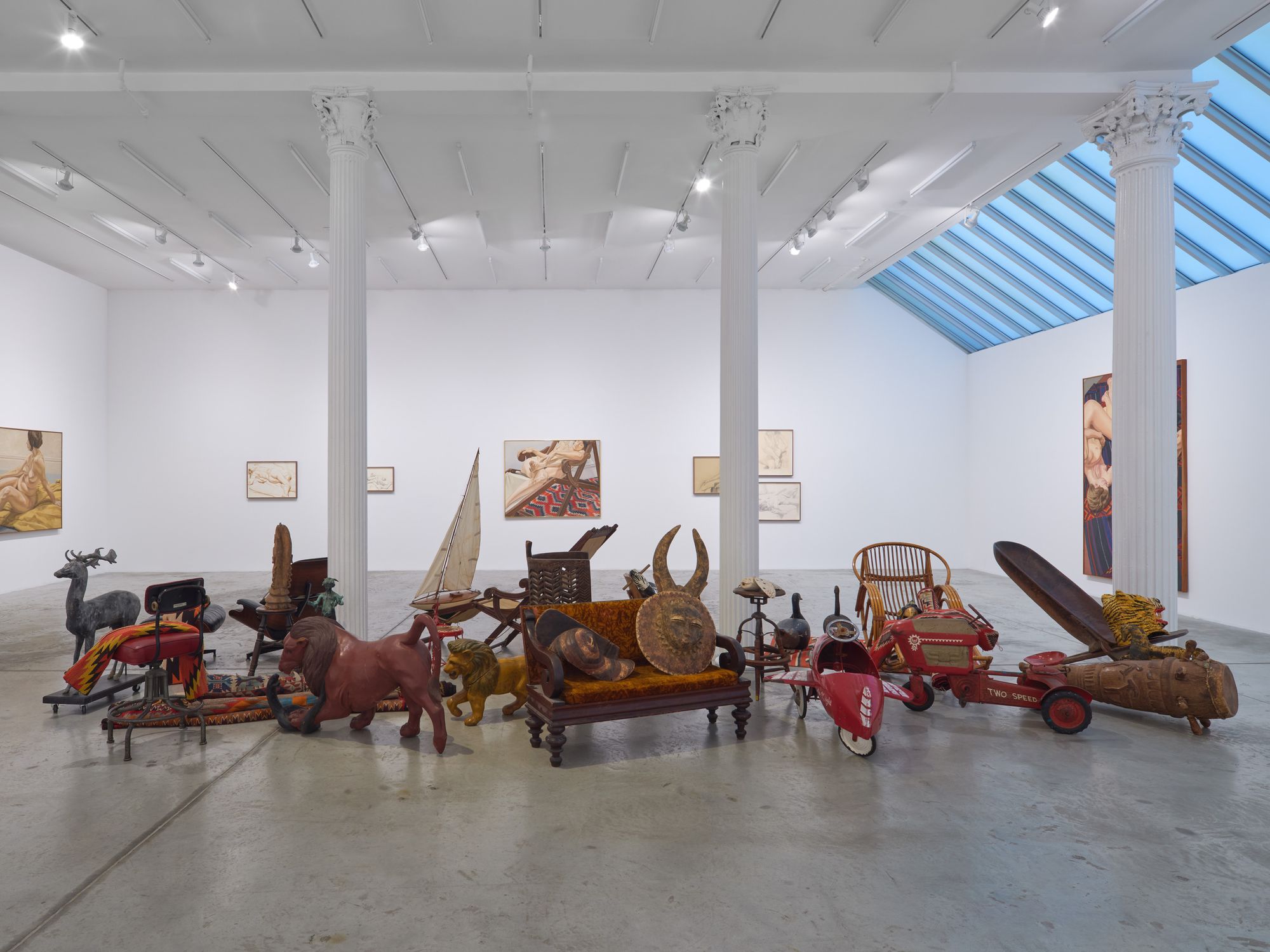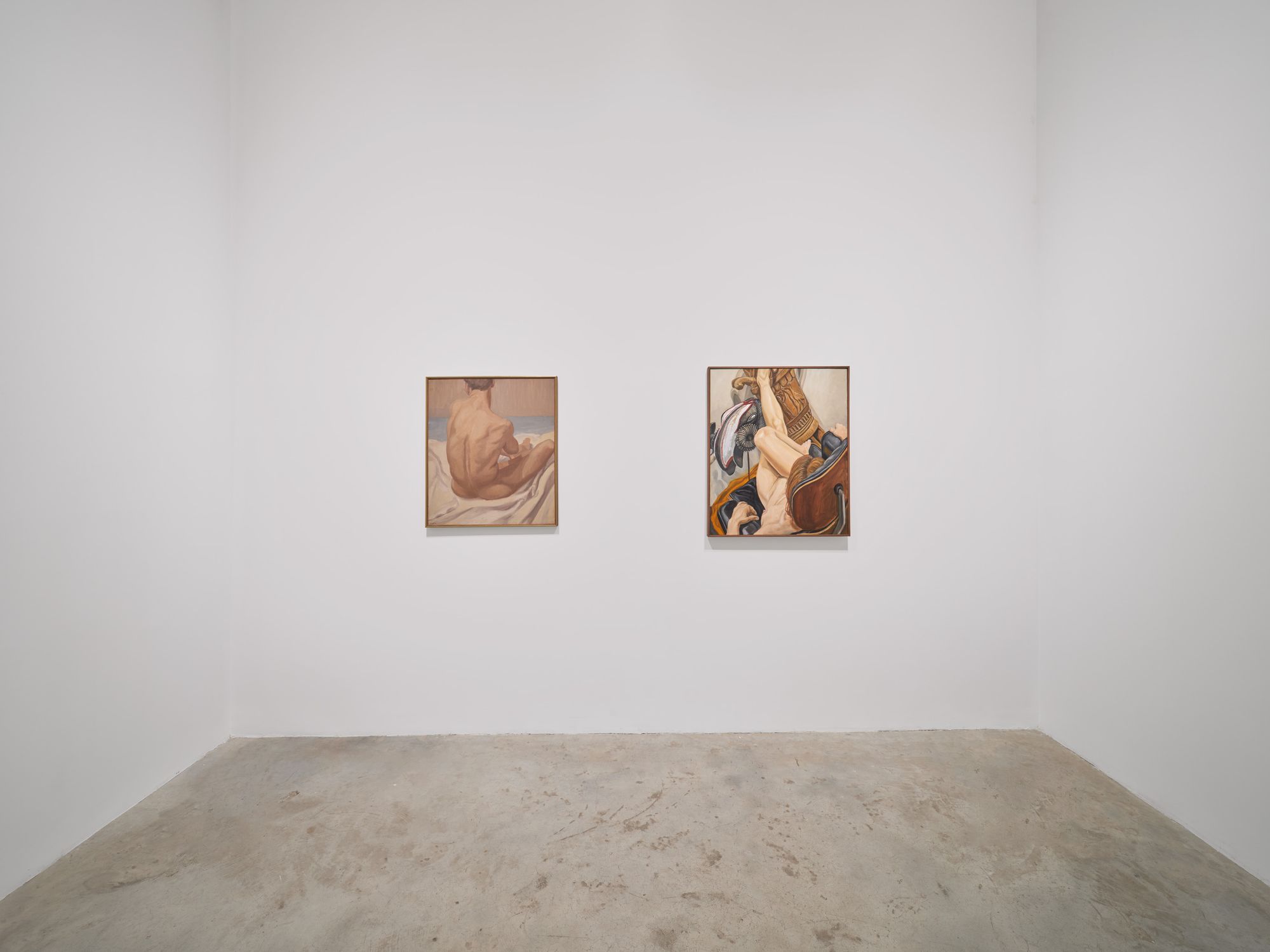
Bortolami Gallery is pleased to present a solo show by Philip Pearlstein (b.1924, d. 2022) featuring paintings, watercolors, drawings, and other works on paper spanning 1962 to 2018. For the first time, these works are exhibited alongside his encyclopedic collection which populated his paintings; from pre-Columbian and African sculpture to Mid-century furniture and Americana. This exhibition provides a concise history of Pearlstein’s oeuvre and offers a fuller picture of this scion of contemporary American figurative painting.
Born in Pittsburgh, Pearlstein found early support for his artistic practice. After enrolling in Carnegie Institute of Technology (now Carnegie-Mellon University) in 1942, he was drafted into the Army, later finishing his studies in Pittsburgh, and moving to New York in 1949, where he shared an apartment with childhood friend Andy Warhol.
In New York, Pearlstein initially found inspiration in Abstract Expressionism, achieving critical success with his expressionistic landscapes, exhibiting at Tanager Gallery in the East Village and Peridot Gallery uptown. Yet as the 1950s progressed, Pearlstein grew disillusioned with the movement’s parameters and having his work relegated to “second generation Abstract Expressionism.” In 1958, he joined the drawing club organized by Mercedes Matter, which included the likes of Lois Dodd, Alex Katz, and Philip Guston, amongst others. It was here that Pearlstein began drawing figures from life.
Although the general turn to the nude figure marks the beginning of Pearlstein’s signature subject, he cements his mature style in 1963-64. He began applying sharp cropping, close viewpoint, a subdued palette, manifold shadows created by fixed floodlights, and steady, flat brushstrokes. In the 1970s and ’80s, Pearlstein’s style, often contextualized within the larger New Realism movement, began to fully take shape as a mélange of the traditional elements of realist painting and his depictions of the depersonalized figure as object.
Perhaps the most important shift lies in the increased complexity of Pearlstein’s images which continued to evolve from the 1970s. An avid collector of all things, from Greco-Roman antiques and varied rugs and kilim to Pop and Folk Americana, he began to further populate the picture plane with these items. As the compositions became increasingly complex, Pearlstein gave the items and the figure equal importance, both in their depiction and placement amongst each other. In the simulated studio created in the gallery, the physicality of the objects juxtaposed against their painted duplicate allows one to comprehend the artist as something other than painter, here he takes on the role of image maker. The work is just as much about balance, editing, and choice as it is about the act of painting itself. Pearlstein was thus as much a painter of the human figure as he was that of inanimate objects, rendering neither as objects of beauty, but rather as matter of fact.
Works

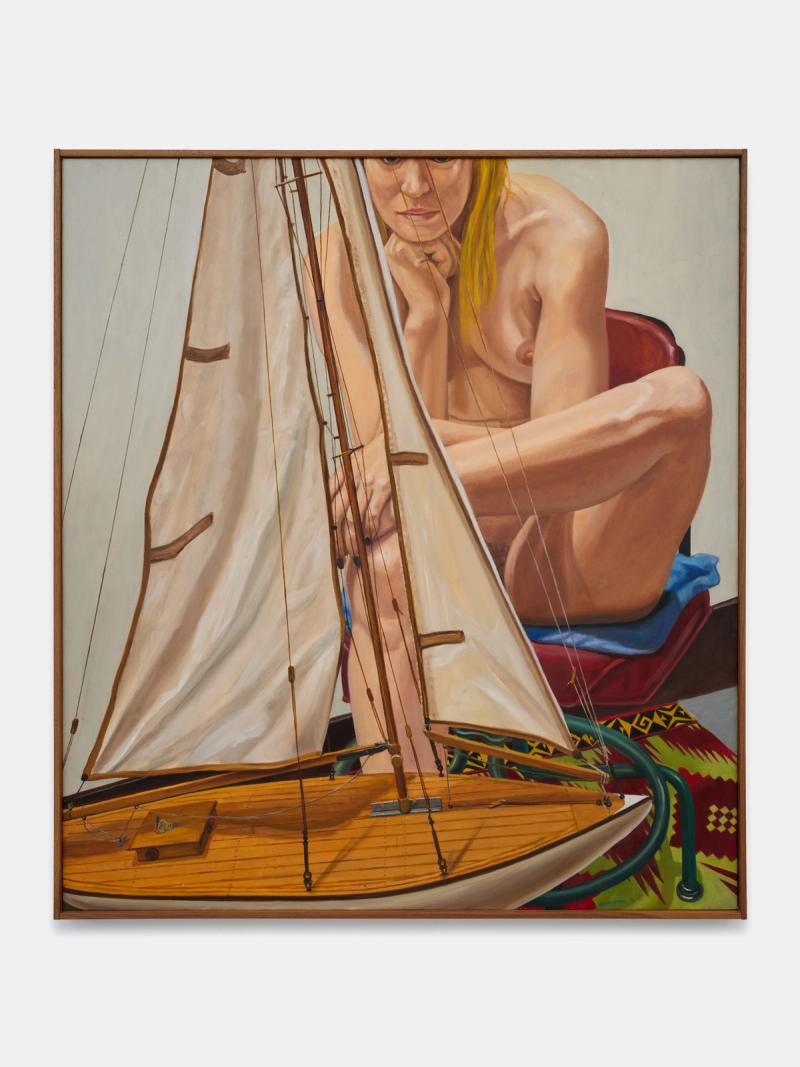
Model with Pond Boat, 2014
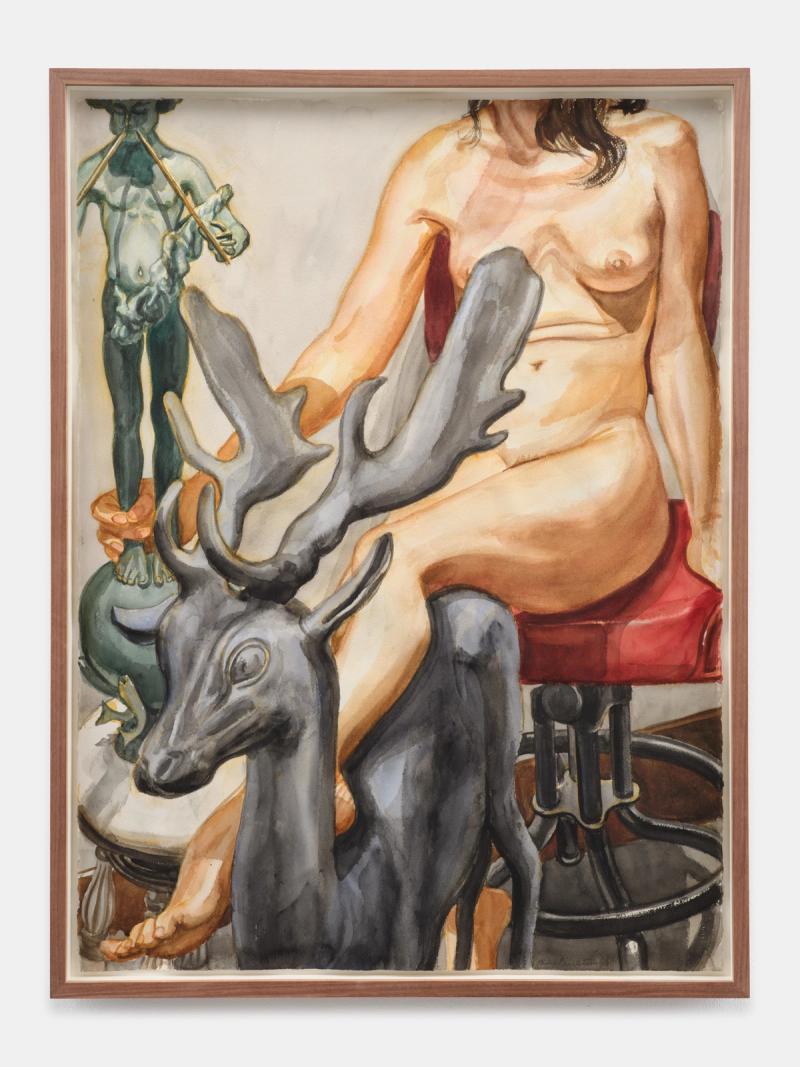
Nude with Lead Stage and Universal Pan, 2009
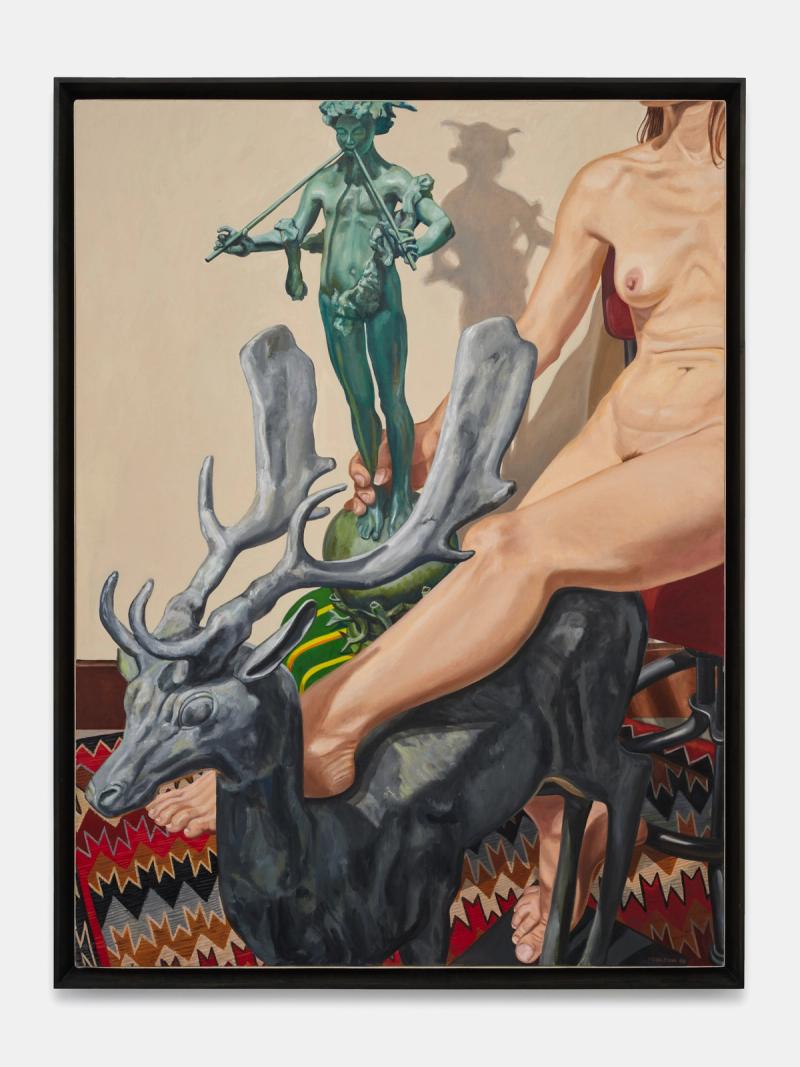
Nude with Lead Stag and Universal Pan, 2009
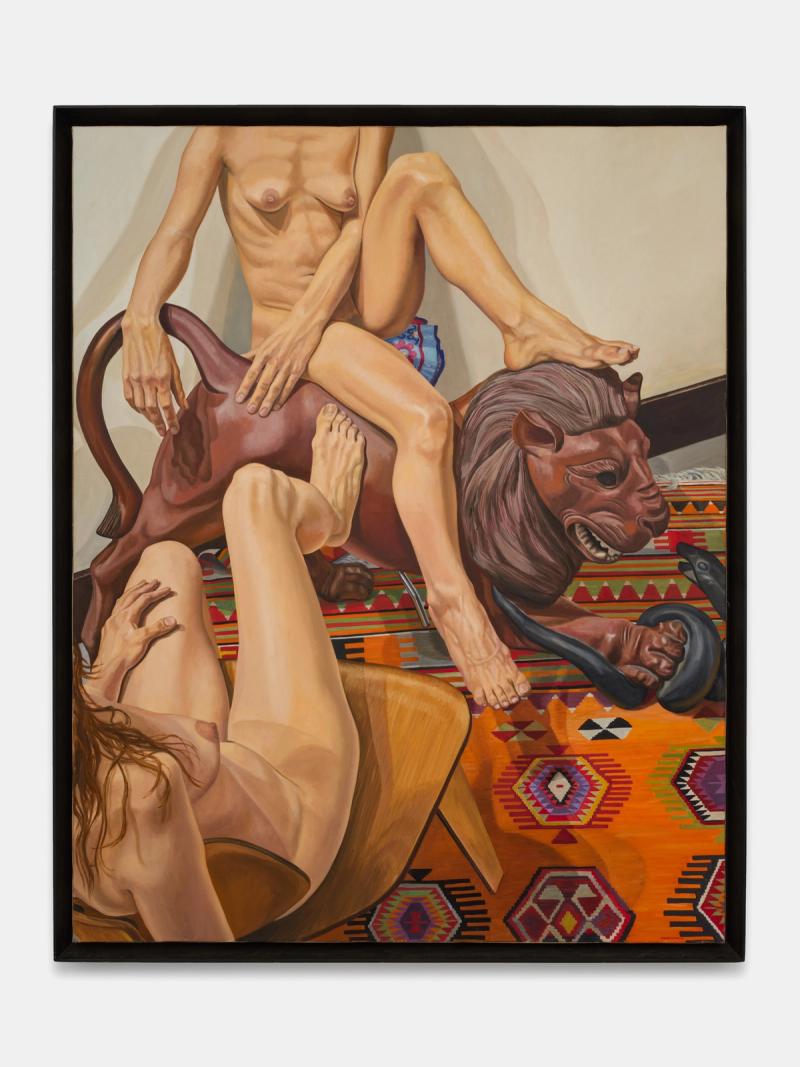
Two Models with Luna Park Lion, 2003
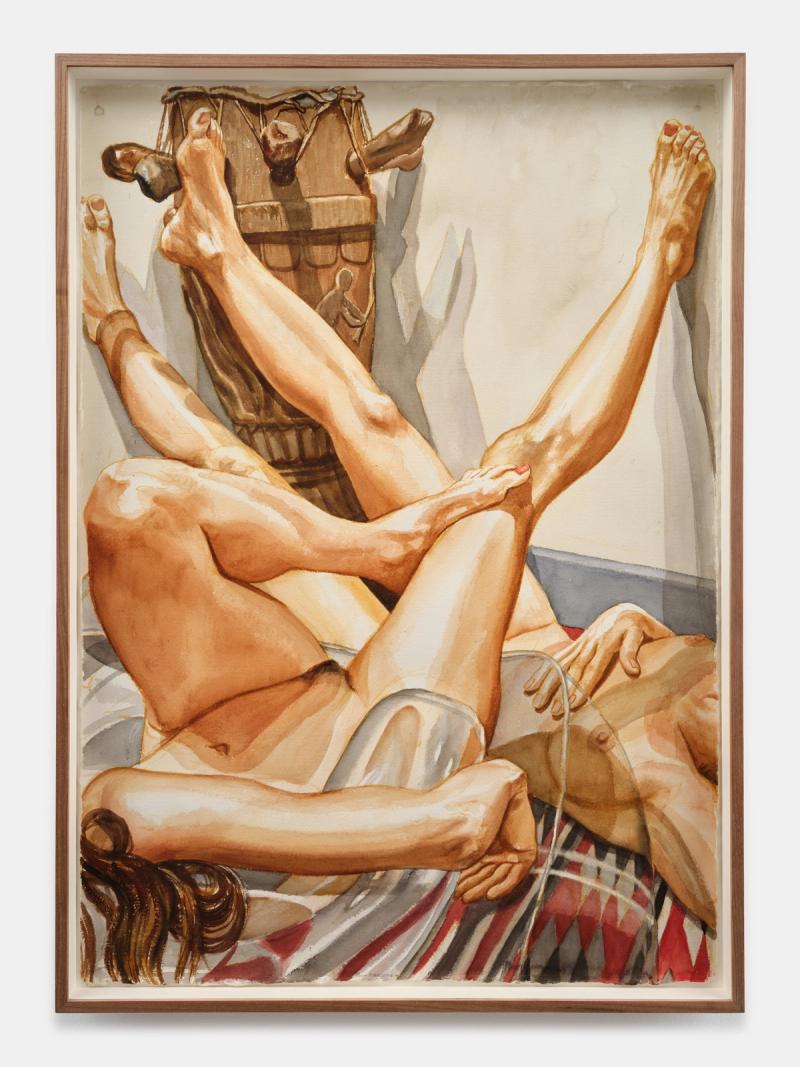
Two Models on Blow-Up Chair with Old African Drum, 1999
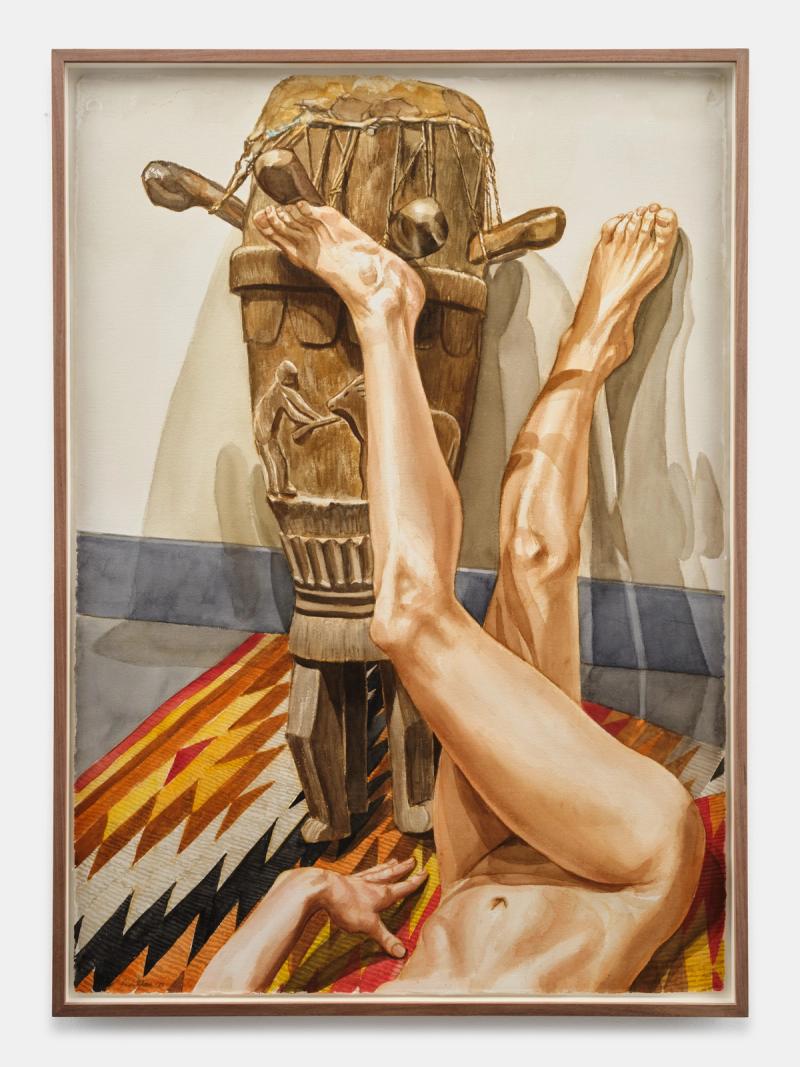
Legs with African Drum, 1997
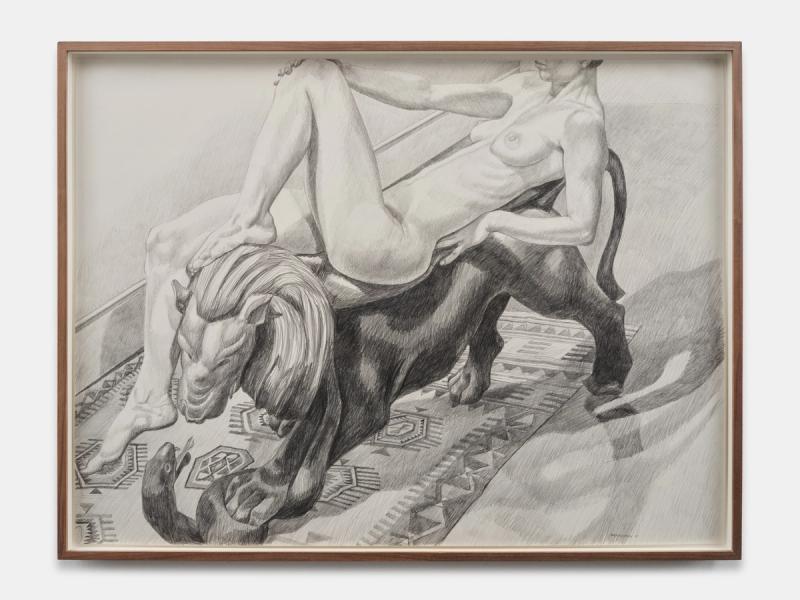
Female Reclining on Lion, 1991
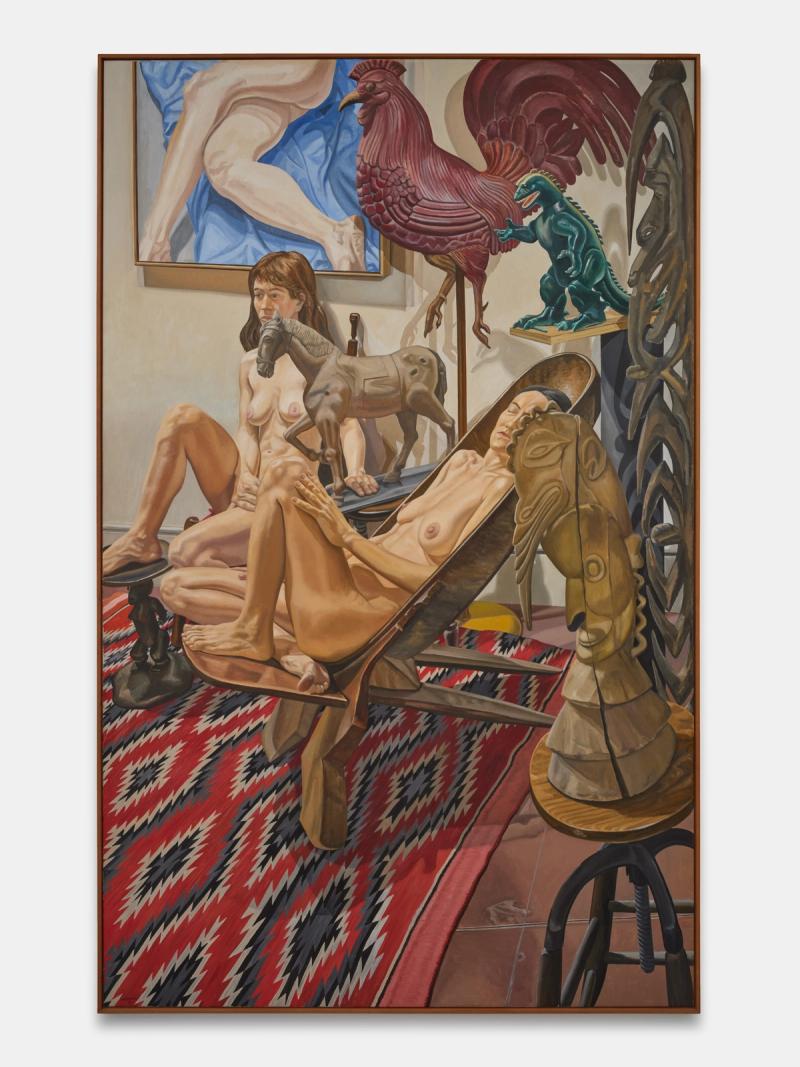
Models with Godzilla, Etc., 1990

Two Models with Bedouin Rug, 1990

Male Model, Profile

Female Model on Deck Chair, 1978
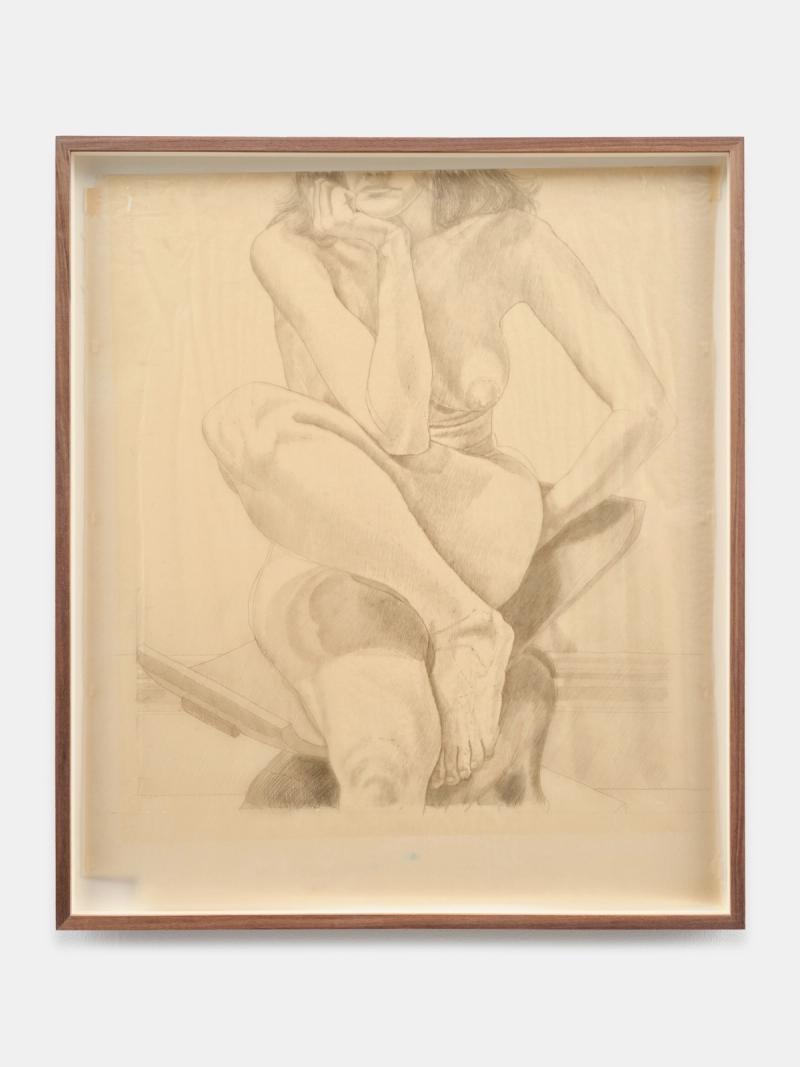
Study for "Nude on a Dahomey", 1976
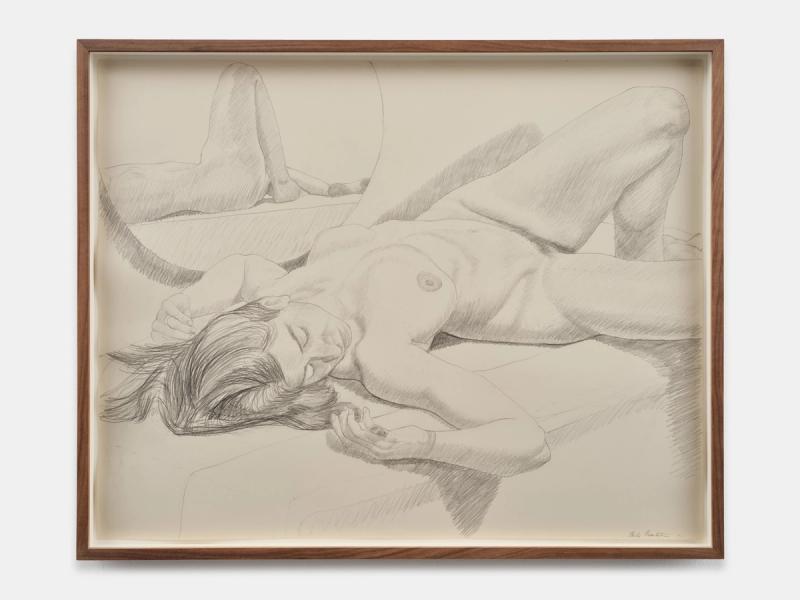
Reclining Nude with Mirror, 1972
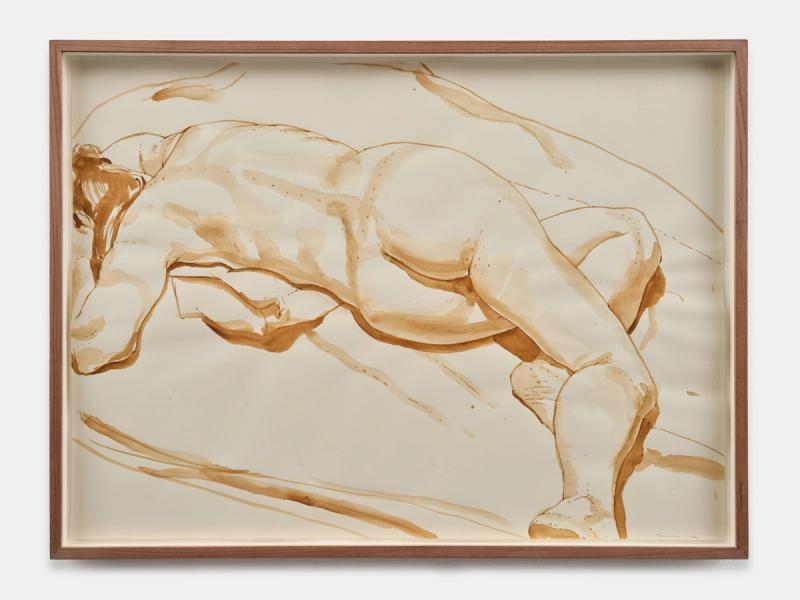
Reclining Nude, 1969
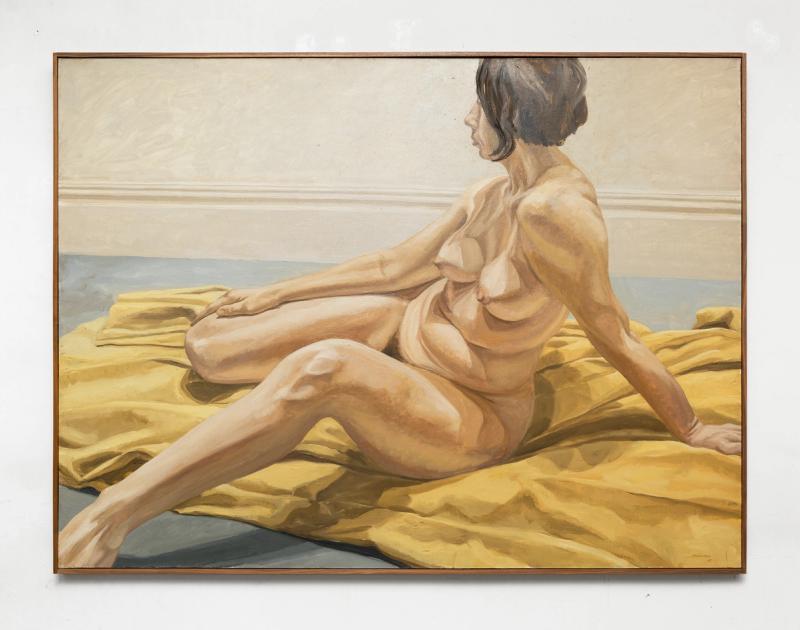
Female Nude on Yellow Drape, 1965
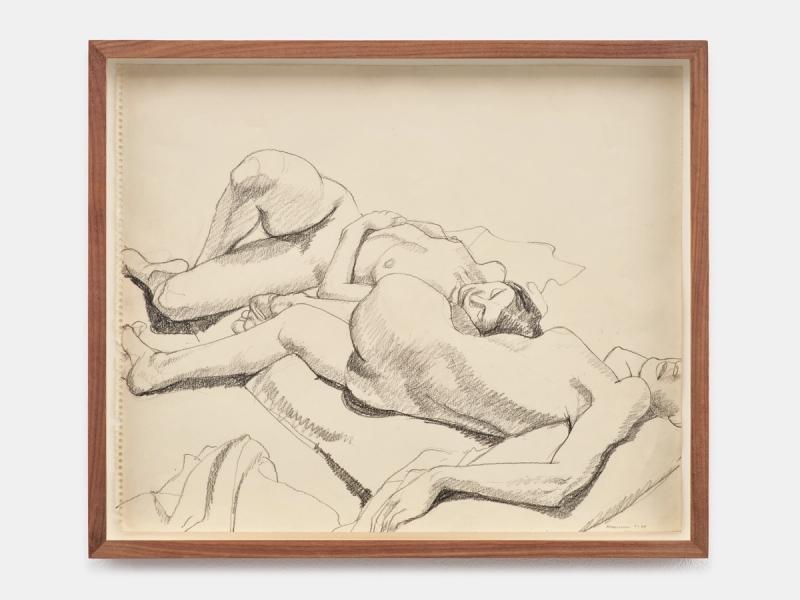
Two Models Lying on Floor, 1964
